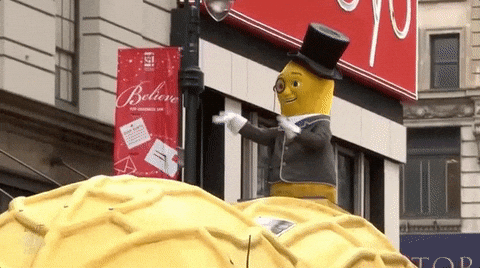Hater Eraser
Veteran
Been watching Reconstruction on PBS brehs  ... Idk
... Idk 
1) What were planters in the South?
While most Southerners were not slave-owners, and while the majority of slaveholders held ten or fewer slaves, planters were those who held a significant number of slaves, mostly as agricultural labor. Planters are often spoken of as belonging to the planter elite or to the planter aristocracy in the antebellum South.

2) Amedeo Obici Founder of Planters
"was just 11 years old when he was sent from his home in Oderzo, Italy, to live with his uncle in Pennsylvania. As a young man in Wilkes-Barre, he worked at a fruit store that also had a peanut roaster. Inspired, he bought a roaster of his own, and after years of experimenting with roasting and salting peanuts, he founded Planters Peanut Company in 1906 with friend and fellow Italian immigrant Mario Peruzzi. The two chose the name "Planters" because they thought it sounded dignified. When they needed to cut costs a few years later, they moved their operation closer to the peanut-fertile lands of Suffolk, Virginia.."

3) Random Cac who's family think General Lee is a hero
"..The local economy around peanuts makes Virginia unique. So does the history. The first commercial peanut crop was grown in Sussex County, Virginia, in the mid-1840s. Like many things in the South, Virginia peanut history is tied to slavery. Slaves brought peanuts from Africa and planted them across the South, where they were used as animal feed. During the Civil War, soldiers started to eat them too. George Washington Carver began research in 1903 at the Tuskegee Institute that would eventually find more than 300 uses for peanuts, including shoe polish and shaving cream. These revelations, combined with the inventions of more modern equipment, brought peanuts out of pig feed and into candy bars and baseball stadiums.
“Virginia is where it started,” says Cotton. "

But back to our goober.
In 1918, Planters placed a series of print ads in The Saturday Evening Post. One in the series was "The Nickel Lunch," a prescient take on grab-and-go fast-food culture to come. In it, a commuter runs to a train. Looks innocent enough. But then there's the copy, which spells out that the peanuts are "brown as a Pullman porter, crisp as a new ticket."

The casual racism was the norm in 1918. Fast-forward 52 years later, and Planters has a two-page spread of a beautiful woman with an afro and a tear—a peanut-enjoying partier who stood for all of America.

 I might be connecting dots that dont need to be connecting ..
I might be connecting dots that dont need to be connecting .. 

 ... Idk
... Idk 
1) What were planters in the South?
While most Southerners were not slave-owners, and while the majority of slaveholders held ten or fewer slaves, planters were those who held a significant number of slaves, mostly as agricultural labor. Planters are often spoken of as belonging to the planter elite or to the planter aristocracy in the antebellum South.

2) Amedeo Obici Founder of Planters
"was just 11 years old when he was sent from his home in Oderzo, Italy, to live with his uncle in Pennsylvania. As a young man in Wilkes-Barre, he worked at a fruit store that also had a peanut roaster. Inspired, he bought a roaster of his own, and after years of experimenting with roasting and salting peanuts, he founded Planters Peanut Company in 1906 with friend and fellow Italian immigrant Mario Peruzzi. The two chose the name "Planters" because they thought it sounded dignified. When they needed to cut costs a few years later, they moved their operation closer to the peanut-fertile lands of Suffolk, Virginia.."

3) Random Cac who's family think General Lee is a hero
"..The local economy around peanuts makes Virginia unique. So does the history. The first commercial peanut crop was grown in Sussex County, Virginia, in the mid-1840s. Like many things in the South, Virginia peanut history is tied to slavery. Slaves brought peanuts from Africa and planted them across the South, where they were used as animal feed. During the Civil War, soldiers started to eat them too. George Washington Carver began research in 1903 at the Tuskegee Institute that would eventually find more than 300 uses for peanuts, including shoe polish and shaving cream. These revelations, combined with the inventions of more modern equipment, brought peanuts out of pig feed and into candy bars and baseball stadiums.
“Virginia is where it started,” says Cotton. "

But back to our goober.
In 1918, Planters placed a series of print ads in The Saturday Evening Post. One in the series was "The Nickel Lunch," a prescient take on grab-and-go fast-food culture to come. In it, a commuter runs to a train. Looks innocent enough. But then there's the copy, which spells out that the peanuts are "brown as a Pullman porter, crisp as a new ticket."

The casual racism was the norm in 1918. Fast-forward 52 years later, and Planters has a two-page spread of a beautiful woman with an afro and a tear—a peanut-enjoying partier who stood for all of America.

 I might be connecting dots that dont need to be connecting ..
I might be connecting dots that dont need to be connecting .. 




